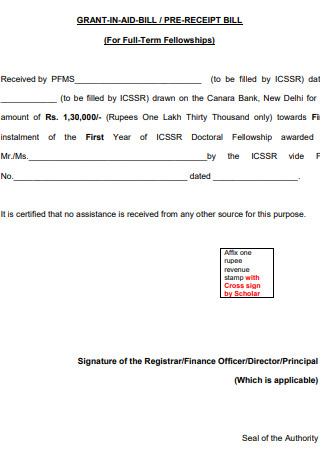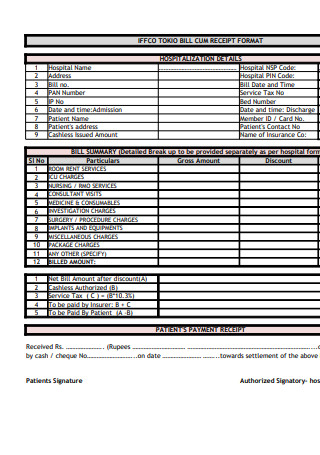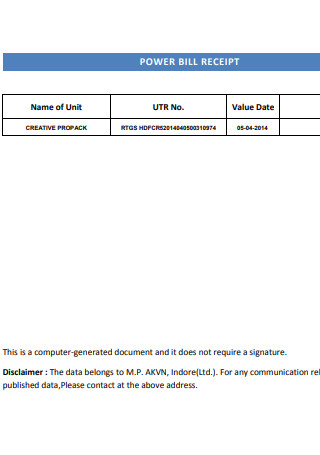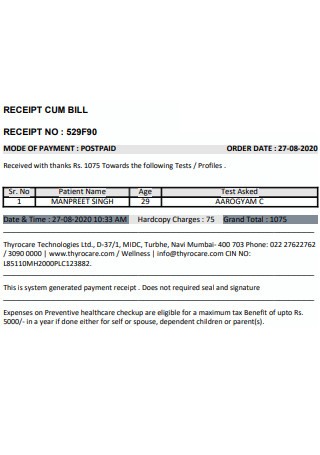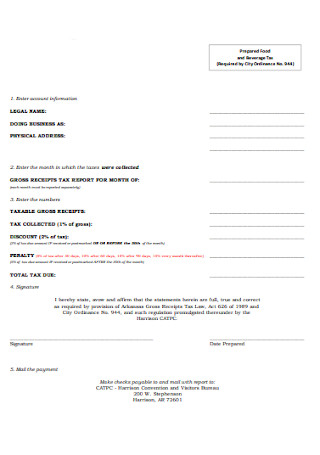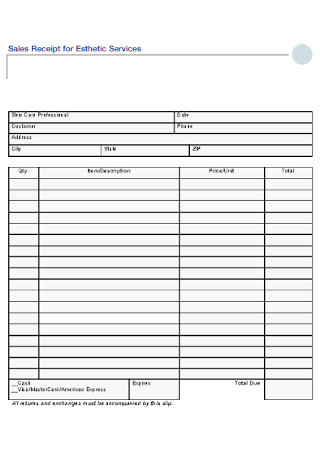6+ Sample Bill Receipts
In other words, you get a bill when you owe money to a business. And when that amount is paid, you will receive a receipt. A bill and a receipt are two very distinct things. When money is owed, a bill is provided, and when that money is paid, a receipt is delivered. To put it another way, a bill is a request for payment, whereas a receipt is a confirmation of payment. Are you looking for bill receipts template that you can use? Scroll down to download our free templates and find out more in this article below how to use a bill receipt.
Bill Receipts: What Are They?
Now that you can already point out the main differences between a bill and a receipt. Let us go in-depth with their definitions to further learn about these important business documents. We will start by knowing what a receipt is. If you have been buying groceries, you should probably be familiar with sales receipts. It is not just a piece of paper that breaks down what you bought because it also includes the prices corresponding to each item. And on the bottom part of that receipt, the total amount you paid is written.
Receipts are not only essential to customers in knowing the worth of what they have paid and checking if those items are in their grocery bags, because of all businesses that accept payments in cash or not need receipts to keep records of the transaction. More so, a receipt is primarily made for products that are sold by a vendor to a customer. Usually, it is consists of the number of items (quantity) multiplied by the price per unit. Sale receipts are crucial accounting records as it serves as evidence that a transaction happened. Businesses keep official receipts to lower their income tax return and increase their potential for deductions.
Meanwhile, bills are common in service-oriented businesses like construction firms. A bill refers to the amount of money a customer owes a business. Before a construction project can start, contractors send out bills to their clients. This lets the client know how much the project can cost them. Having a bill establishes their expectations and gives them an idea about the project plan. Additionally, a bill is a document that outlines the amount that a customer owes for goods and services received and rendered. It is printed or written as a statement for the charges owed. Thus, bill receipts are documents proving that a bill was sent to and received by its intended receiver.
Based on an article posted by IRS on their website, there were approximately 1800 and 1700 tax crimes investigated in 2018 and 2019 respectively. Most violations include tax evasion and tax frauds, which have a fine of up to $250,000 for individuals while $500,000 for corporations.
What Are the Different Types of Receipts?
Before you can make your business’s own receipt, you should keep in mind the different types. Each type of receipt is made with a specific purpose. You must also learn that purpose in order for you to come up with an effective receipt.
How to Create Bill Receipts
Did you know you do not have to start from scratch to come up with a working bill receipt? Yes, you heard it right. Making your bill receipt is so much easier using a template. Now that it piques your mind, you might be looking for the best template in town. Do not worry because you have come to the right place. Our website offers an array of, not just bill receipt templates, but different kinds of templates suitable for your business and personal needs. The challenge of choosing the right stencil for your task can be a little tricky, but we will help you with that. Below is a list of tips and tricks ni creating a bill receipt using one of our templates. Let us get started.
Step 1: Choose and Download Your Template
Knowing the purpose of your bill receipt is the best first step for your task. When you know what the document is for, it will be easier to find the right template that you can work on. This will also help you align your needs, concerns, and expectations towards your task. After choosing a template, create a quality plan. Every successful project starts with a plan. Hence, outline your goals and establish steps in achieving these goals.
Step 2: Modify Your Template Using an Editing Tool
Once you have chosen a template, click the download button and it will be automatically stored on your device. Next, select an editing tool. You can pick one that is easily accessible to you or you are most comfortable using. Make sure your editing tool is compatible with the template file format. Otherwise, it will be difficult to work on the editing tool because it could mess up the document’s formatting. To know the suitable editing tools, check on your source’s website. It should be featured there together with your template.
Step 3: Make Sure to Do the Right Format
When you get the hang of editing your template, mind the right formatting. Although a template comes in with suggested content, it does not mean you have to rely on it all alone. The best format for your bill receipt is one that fits the services you offer. It means you need to outline your bill receipt based on how it will be used. Not every bill receipt is the same. It differs based on what industry they are being used in.
Step 4: Considering Going Digital
Most business documents nowadays are digitally made. This is because of the internet. Using electronic receipts is very convenient for your business because it is easier to make and keep. Everything is stored in the clouds. You can also create a billing statement, homework schedule, and other types of documents. This type of receipt form is very suitable too because you are no longer making paper trails, which is good for the environment.
FAQs
What should be included in your bill receipt?
- Title or Label
- Business Details
- Date of Transaction
- List of Items
- Unit Price
- Total Amount
- Discount and Tax
- Signature Block
How is a receipt different from an invoice?
An invoice is a request for payment, while receipts are proof of purchase. Furthermore, a fee receipt is a document that can prove the existence of a transaction. When a receipt is issued, it means that something of value and payment has been made to finalize a sale.
Why receipts are important?
Properly storing receipts and other business records is essential to your business’s success because monitors progress by helping you see how your business is doing and look out for its financial health.
The benefits of receipt are very broad as it covers both customer and business concerns. Without a receipt, a business will not know whether they are making positive returns or not. For a customer, a receipt serves as an inspection checklist in which they can know the number of items they paid for and how much it costs. Moreover, bill receipts are a foundation of financial security. If you want your business to be successful, invest in making a useful receipt today.

